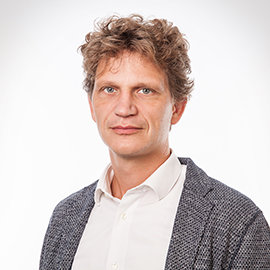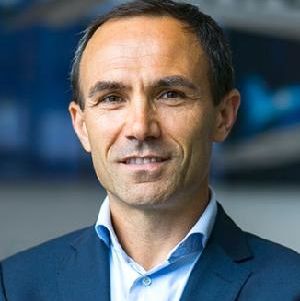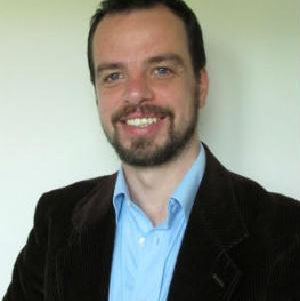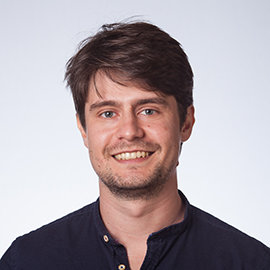The TU Delft COVID app focus on facilitating and standardizing numerical simulations involving human expiratory activities (sneezing, coughing, speaking and breathing), enabling engineers with basic level of fluid dynamics to perform reliable simulations of customized environments (cinemas, hospitals, meeting rooms, etc.).
The TU Delft COVID app is built for use together with Ansys Fluent, one of the most complete commercial software for fluid dynamic simulations. The app sets up automatically a simulation in Ansys fluent the following user-defined inputs:

Leave your email to get updates about TU Delft COVID app

The app then automatically creates the geometry, the meshing and sets-up the simulation in Fluent as follows:
The app also automatically compile and hook-up user-defined-functions (UDFs) controlling the transient flow rate and direction of moist air expelled through mouth and nostrils, the transient mass flow rate and size distribution of expelled droplets.
All of the human expiratory activities are simulated based on scientific data published on respected scientific journals and Particle Image Velocimetry (PIV) experiments performed with humans exclusively for the creation of this app. Details of the data used are provided in the app manual. Also, best practices for simulations, examples and guidelines on how to perform your simulation is given in the manual.
The COVID-19 pandemic has drastically altered the way our society functions, affecting people’s routines and personal relationships. Even the most prepared health care systems were overwhelmed, demanding a quick reaction from politicians, who had to respond by imposing social-distancing policies based on the available scientific data. In the fluid dynamics community, which include the leading-scientists on research related to the spread of viruses through the air, there was wide recognition of the lack of understanding of the dynamics of human expiratory activities leading to transmission of virus-containing droplets, such as coughing and sneezing, but also breathing and speaking. During the pandemic, we have seen many institutions struggling to define the best methods of prevention, juggling between wearing a mask or not and changing their opinion over time about airborne contagion. The truth is that we were not ready for this pandemic and, while scientists had to rush to provide answers, they kept on learning along the way.
Prevention against SARS-CoV-2, the virus responsible for the spread of the COVID-19 disease, or against any future deadly respiratory virus, is a task that can only be successfully achieved by a collaborative effort between fluid dynamicists and medical doctors. The role of the former is to investigate, experimentally and through simulations, the air velocity, the size and concentration of expiratory droplets, how they evaporate in time depending on ambient temperature and humidity, and how these droplets are transported in the air from the moment they leave the mouth or nostril of a contaminated person until it reaches an exposed individual or deposit on surfaces. In addition, each human expiratory activity is different, some expelling droplets in higher velocities others in larger quantities. Although current commercial simulation software are able to perform high-fidelity simulations, the simulation of human expiratory activities require several scientific inputs that are not promptly available in the software. The choice of the correct input parameters for performing a simulation representative of reality is as important as the software itself.
A few simulations have been performed to illustrate the app capabilities. The simulation of a man coughing in a narrow unventilated room is shown below. The image shows four different time instances. Coughing is a fast event and lasts about 0.6 s. The diameter of the water droplets expelled during the cough range from 1 to 2000 micrometres (rainbow colour bar). After the cough, particles remain moving forward due to inertia. Slowly they lose speed due to air resistance and fall due to gravity. The generated turbulence from the cough helps to spread the particles. The air coming out from the body (about 33 C) is warmer than ambient (20
C) and moves slightly upwards. Together with the recirculating nature of the turbulent flow, it helps to keep some particles airborne. As observed in the last time instance at about 20 seconds after the cough, most particles larger than 100 micrometres have fallen, particles larger than 50 micrometres are on a clear falling trajectory, while particles smaller than this threshold remain airborne and follow the air motion (the grey isosurfaces represents air velocity magnitude of 10 cm/s) .
The particle number density (droplets/cm3) and mass concentrations (mg/m3) are shown below in two time instants at the middle plane (z = 0.5) passing through the body symmetry axis. This two quantities are of extreme importance for infection risk analysis. The mass concentration can be used to estimate the total amount of virions inhaled by a person by assuming the virions are uniformly distributed in the saliva. This way the total amount of virions inhaled is a fraction of the total mass of saliva inhaled divided by the virion average mass. More sophisticated analyses may also take into account the size of the droplets inhaled, requiring information about the number density. Smaller droplets can penetrate deeper into the lungs and can be more infectious than larger droplets.
A second example shows a group of four people. The person standing is coughing and breathing, while the three people sitting are only breathing through their nose. Droplets are only added during the cough and the particles are traced during the simulation to observe the isolated effect of the cough. The effect of body temperature is also included in this simulation. The air velocity (white and yellow contours) and the air temperature (white and red contours) reveal the air movement due to breathing or coughing and due to buoyancy generated by the warm bodies. The presence of the bodies warming up the room seems to reduce the buoyancy effects of the coughing plume and less particles remain airborne in comparison to the previous simulation. A few amount of large particles remain recirculating in front of the person for quite a while. The effects of external flow due to an open window, for instance, have not been included, but could be easily implemented by the user.
In addition, it is shown below the simulation of a person sneezing. In this case, the direction of the sneeze changes with time to simulate the head movement, with the mouth centre axis initially inclined slightly upwards and slowly returning to its regular horizontal position, without actually moving the 3D model head, to avoid simulation complications due to a moving mesh.
Experimental data is used for validation of the numerical simulations and as input, when the data available in literature was incomplete. Measurements of the air velocity during human expiratory activities have been performed in a black tent filled with theatre smoke, through the technique Particle Image Velocimetry (PIV). Measurements were performed while speaking (numbers or passage), breathing or coughing, with and without mask. Three subjects have volunteered for the task: two males (32 and 46 years old) and one female (12 years old, accompanied by her father). In the figure below, it is shown the difference between the three subjects while coughing without mask. The younger adult seems to have the strongest cough, while the cough of the 12-year-old female is certainly the weakest. Currently the app does not differentiate by age. Instead, it takes into account differences in genre, height and weight, following the literature (detailed in the app manual).
Experiments of unsteady speaking were realized during counting numbers from 1 to 10 or while reciting an excerpt of the rainbow passage a speech often used for the study of voice and articulation and representative of the multiple sounds of the English language:
“When the sunlight strikes raindrops in the air, they act as a prism and form a rainbow. The rainbow is a division of white light into many beautiful colours. These take the shape of a long round arch, with its path high above, and its two ends apparently beyond the horizon. There is, according to legend, a boiling pot of gold at one end. People look, but no one ever finds it. When a man looks for something beyond his reach, his friends say he is looking for the pot of gold at the end of the rainbow.”
The unsteadiness of the speech is demonstrated in the figure below. The flow velocity and magnitude of this measurement is used as input for simulations.

Although measurements using masks have also been acquired, the effect of using masks has not yet been implemented into the app.
The TU Delft COVID app is a collaboration between Prof. Fulvio Scarano, deputy dean of the faculty of aerospace engineering and head of the AWEP department at TU Delft, the fluid mechanics expert Dr. Lorenzo Botto from the Process and Energy Department at TU Delft, simulation expert Ir. Wouter van den Bos, CEO of SDC Verifier and teacher from the faculty of mechanical, maritime and materials engineering (3mE) at TU Delft, and aerodynamics postdoctoral researcher Ir. David E. Faleiros also from 3mE, TU Delft.

Ir. Wouter van den Bos

Prof. dr. Fulvio Scarano

Dr. Lorenzo Botto

Ir. David Engler Faleiros